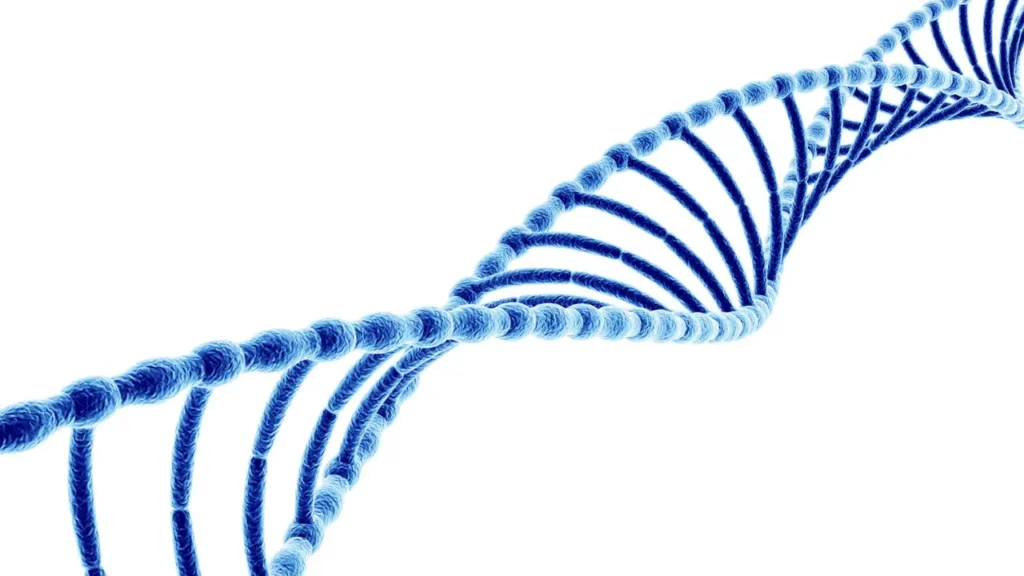Description
Cutaneous T-cell lymphoma (CTCL) represents a form of cancer that develops from T-lymphocytes, which are white blood cells that ordinarily aid in the body’s defense against infection. Skin lesions develop as an outcome of those malignant T-cells within CTCL being inappropriately activated and proliferating uncontrollably. The skin lesions may be divided into a number of subcategories, such as primary cutaneous CD30+ T-cell lymphoproliferative diseases, mycosis fungoides, and Sézary syndrome.
The most prevalent subtype of mycosis, mycosis fungoides, often manifests as flat, scaly patches or plaques upon the skin that can develop into elevated, nodular lesions. The more severe variant of Sézary syndrome manifests as extensive erythroderma (redness on the skin). This syndrome has both lymph node and blood involvement. Itching may also be associated with yellow or red nodules or papules on the skin, which are the primary cutaneous CD30+ T-cell lymphoproliferative conditions.
You May Also Like:
IS DR MERCOLA KRILL OIL TRULY A GREAT SOURCE OF DAILY OMEGA-3S?
IMPORTANT INFORMATION ABOUT BULLETPROOF KRILL OIL: A LEADING OMEGA 3 PRODUCT
Cutaneous T-cell lymphoma: Description, Causes, And Treatment Protocol is an original (HealthXWire) article.
Possible Causes
Although the exact origin of CTCL is uncertain, it is thought to have multiple causes. The following are some potential causes of CTCL: –
Genetic mutations: CTCL formation has been linked to genetic abnormalities that alter the T-cell receptors or various other signaling mechanisms. In rare instances, hereditary mutations in genes including STAT3 and CARD11 have been linked to CTCL.
Viral infections: The emergence of CTCL has been associated with viral infections, specifically HTLV-1, a form of human T-cell lymphotropic viruses. Some portions of the world, including the Caribbean, Japan, and parts of South America and Africa, have an endemic HTLV-1 population.
Environmental factors: The possibility of CTCL might be further increased by environmental variables like exposure to solvents, pesticides, and other pollutants. These involve chronic sun exposure, according to some studies.
Exacerbating and Mitigating Factors
Several factors are said to make CTCL symptoms worse or better.
The exacerbating factors include: –
Exposure to chemicals: Some chemicals that are frequently present in solvents, paints, and pesticides may irritate and inflame the skin can exacerbate the symptoms of CTCL.
Sun exposure: UV (ultraviolet) radiation exposure damages the skin and exacerbates the symptoms.
Infections: The signs of CTCL can become worse from infections. Patients with CTCL ought to utilize precautions to prevent infections, such as frequently washing their hands and preventing contact with infected individuals.
Stress: It has been discovered that stress makes CTCL symptoms worse. Stress can impair immunity, which makes it more difficult for the human body to fend off diseases and infections.
The mitigating factors include: –
Sustaining a healthy lifestyle: Healthy eating, regular exercise, and adequate sleep may all strengthen the body’s immune system and enhance general health, which can lessen the effects of CTCL.
Preventing harsh skin products: Individuals who have CTCL should refrain from using abrasive detergents, soaps, and various other skin care products because they can irritate their skin and make their symptoms worse.
Moisturizing the skin: Inflammation and itching, both of which are frequent signs of CTCL, can be decreased by moisturizing the skin.
Seeking medical treatment: Chemotherapy, phototherapy, and topical medicines are just a few medical options for treating CTCL.

Standard Treatment Protocol(s)
The subtype, illness stage, and general health of an individual are among the variables that affect how CTCL is treated. The major goals of treatment are to manage symptoms, prevent disease progression, and enhance the quality of life.
Following are examples of the common topical and systemic medications used in the conventional CTCL therapy program: –
Topical therapies: During early-stage CTCL, especially mycosis fungoides, topical treatments are typically the primary line of treatment. Common treatments include retinoids, nitrogen mustard, and topical corticosteroids. These medicines function by calming the inflammatory response and halting the development of cancerous T cells. Nitrogen mustard mechlorethamine administered topically is frequently utilized as the primary treatment for CTCL during the early stages.
Systemic therapies: Once the disease has advanced or become more pervasive, systemic medicines are administered. Chemotherapy, radiation therapy, along targeted therapies are some of these treatments. Chemotherapy drugs, including doxorubicin, gemcitabine, and methotrexate, kill quickly dividing cells, particularly cancerous T-cells. The use of radiation is very beneficial in treating CTCL, especially when the lesions are limited. Targeted medicines, like immune checkpoint inhibitors alongside monoclonal antibodies, stop the development and progression of CTCL by specifically targeting any molecules or pathways responsible.
There are, however, many developing treatments that are currently being evaluated in clinical trials besides these traditional medications. These consist of epigenetic therapy, which includes adjusting gene expression to change the behavior of cancer T-cells, along with adoptive cell treatment, which involves altering an individual’s own T-cells to identify and eliminate malignant T-cells.

Treatment Options
Many of these therapies can be used in conjunction with conventional therapy, whereas others can be used to increase the effectiveness of conventional therapy. The subsequent list includes several CTCL therapy possibilities: –
Prescription Medications: Prescription drugs, especially systemic therapy, are frequently utilized to treat CTCL. Nevertheless, a prescription could also be needed for some topical drugs. Here are several of the prescription drugs that are frequently used for managing CTCL.
Topical corticosteroids: These drugs lessen inflammation and might assist with CTCL symptoms. They come in a variety of compositions and strengths.
Interferon: An immune system molecule called interferon can aid in the battle against cancerous cells. In circumstances where previous therapies have failed, it is utilized like a systemic therapy for treating CTCL.
Retinoids: Bexarotene and isotretinoin are examples of retinoids that function by preventing the development of cancerous T-cells. These are frequently used in conjunction with other treatments.
Immune checkpoint inhibitors: These drugs are now being studied in clinical trials because they have demonstrated the potential to ameliorate the effects of CTCL.
Over-the-Counter Formulations: Various over-the-counter medications could aid in reducing the signs of CTCL. The following list includes several over-the-counter medications for CTCL: –
- Moisturizers
Regular application of moisturizers might reduce the itching and dryness brought on by CTCL. It is advised to use hypoallergenic and fragrance-free moisturizers.
- Anti-itch creams
Calamine lotion and hydrocortisone cream are two over-the-counter as well as anti-itch products that can help soothe itching and discomfort.
- Sunscreen
Regular application of sunscreen with high SPF might stop CTCL lesions from getting worse from sun exposure.
Nutritional Supplements: In addition to the standard CTCL therapy, nutritional supplements are frequently employed. The following list of dietary supplements could be beneficial: –
- Vitamin D
The immune system depends heavily on vitamin D, which may also help control the development of cancerous T cells. Fatty fish, meals that have been fortified, and supplements all contain vitamin D.
- Omega-3 fatty acids
Omega-3 fatty acids are anti-inflammatory and could aid with CTCL problems. They can be obtained as supplements or in fatty seafood like salmon and tuna.
- Probiotics
Live bacteria supplements known as probiotics can aid the body’s immune system and maintain a healthy gut. Given that gut microbiota has been associated with the immune system’s functioning, they may be useful in curing CTCL.
Natural and Herbal Remedies: Different herbal and natural treatments are frequently employed for the treatment of CTCL. It is crucial to remember that these treatments haven’t undergone a lot of clinical testing and might not work for everyone. The following includes a few all-natural and herbal treatments for CTCL: –
- Aloe vera
The wound-healing and anti-inflammatory qualities of aloe vera might help in minimizing CTCL symptoms.
- Milk thistle
Due to its anti-inflammatory and antioxidant characteristics, milk thistle may be able to shield the liver from harm brought on by chemotherapy along with other medical procedures.
- Tea tree oil
Owing to its anti-inflammatory and antibacterial qualities, tea tree oil could assist with alleviating CTCL-related itchiness and irritation. It needs to be utilized with caution because it may irritate some people’s skin.
- Curcumin
Turmeric contains a substance called curcumin, which has both anti-cancer and anti-inflammatory qualities. It is available as a supplement and may aid with CTCL symptoms.
Overall, medical advice from doctors is the most important and any treatment plans or remedies are not to be used in place of standard medical care.

Conclusion
Cutaneous T-cell lymphoma (CTCL) is a rare form of non-Hodgkin lymphoma that primarily involves the skin. CTCL is a form of cancer that often requires a multidisciplinary approach involving dermatologists, oncologists, and other specialists for its treatment. A few of the causes of CTCL involved are genetic mutation, viral infections, and certain environmental factors, even though the exact reason has not yet been ruled out.
Treatment options vary based on the stage and extent of the disease, ranging from topical treatments and phototherapy to systemic therapies and, in some cases, stem cell transplantation. Regular monitoring and follow-ups are crucial to assess treatment response and adjust interventions as needed. It is hoped that comprehensive and personalized care in enhancing the quality of life for those living with CTCL will be further developed and advanced in the future.

Additional resources for further reference
https://www.hopkinsmedicine.org/health/conditions-and-diseases/lymphoma/cutaneous-tcell-lymphoma
https://www.aad.org/public/diseases/skin-cancer/types/common/ctcl
https://emedicine.medscape.com/article/2139720-overview
https://my.clevelandclinic.org/health/diseases/17940-cutaneous-t-cell-lymphoma
Important Note: The information contained in this article is for general informational purposes only, and should not be construed as health or medical advice, nor is it intended to diagnose, prevent, treat, or cure any disease or health condition. Before embarking on any diet, fitness regimen, or program of nutritional supplementation, it is advisable to consult your healthcare professional in order to determine its safety and probable efficacy in terms of your individual state of health.
Regarding Nutritional Supplements Or Other Non-Prescription Health Products: If any nutritional supplements or other non-prescription health products are mentioned in the foregoing article, any claims or statements made about them have not been evaluated by the U.S. Food and Drug Administration, and such nutritional supplements or other health products are not intended to diagnose, treat, cure, or prevent any disease.
Table of Contents


